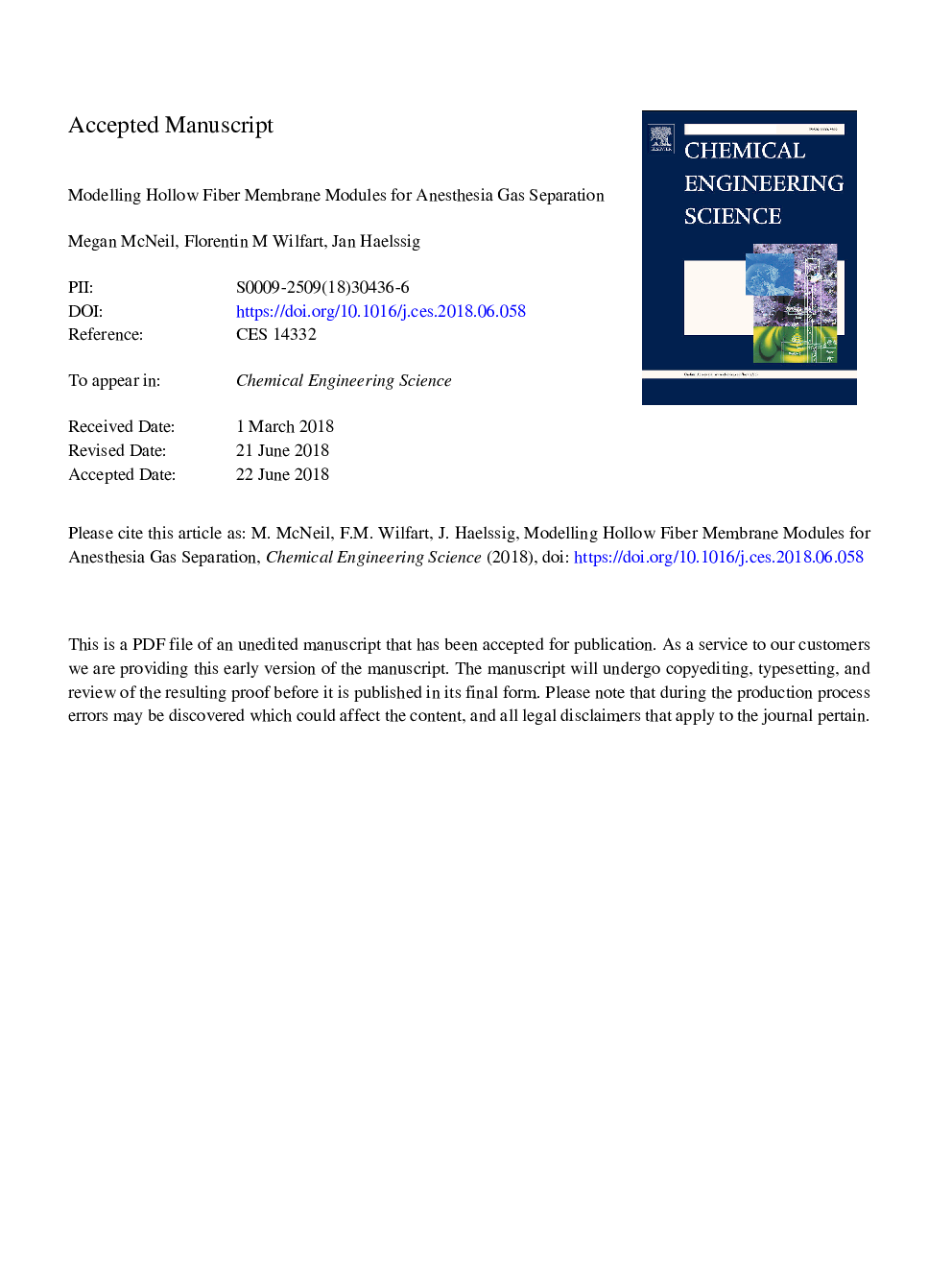| کد مقاله | کد نشریه | سال انتشار | مقاله انگلیسی | نسخه تمام متن |
|---|---|---|---|---|
| 6588269 | 1423228 | 2018 | 37 صفحه PDF | دانلود رایگان |
عنوان انگلیسی مقاله ISI
Modelling hollow fiber membrane modules for anesthesia gas separation
ترجمه فارسی عنوان
مدل سازی ماژول های غشایی فیبر توخالی برای جداسازی گاز بیهوشی
دانلود مقاله + سفارش ترجمه
دانلود مقاله ISI انگلیسی
رایگان برای ایرانیان
کلمات کلیدی
مدل سازی فرآیند غشایی، جداسازی دی اکسید کربن، تحویل بیهوشی، مدل مخازن در سری، غشای فیبر توخالی،
موضوعات مرتبط
مهندسی و علوم پایه
مهندسی شیمی
مهندسی شیمی (عمومی)
چکیده انگلیسی
A membrane separation process was previously developed to remove carbon dioxide from anesthesia partial rebreathing circuits. The process investigated in this study used a cylindrical hollow fiber membrane module with radial flow of the feed gas on the shell side and axial flow of the sweep gas on the lumen side of the hollow fibers. Oxygen was used as the sweep gas in one- and two-pass configurations to facilitate carbon dioxide transfer across the membrane. The polymethylpentene membranes used in this study have previously been shown to have a high selectivity for carbon dioxide over commonly used anesthetic vapours. Therefore, the primary focus of this study was on the carbon dioxide separation performance of different module configurations and the development of a validated model that could be used for further design and optimization studies. A transient pseudo-one-dimensional design model was developed to predict the performance of the membrane system. The model was constructed by dividing the membrane into a distribution of interconnected, equally-sized, perfectly-mixed segments. Steady-state experimental data, collected for a 5% carbon dioxide (balance oxygen) feed gas and a pure oxygen sweep gas, were used to tune the number of segments in the model. The tuned model predictions were then compared to experimental data for the full range of feed and sweep flow rates (1-15 L minâ1). Four different membrane modules were used to explore the impact of configuration on separation performance. The modules varied in diameter (80 mm and 100 mm), hollow fiber packing density (0.213, 0.302, and 0.454), and number of sweep passes (one and two passes). The model provided good predictions of the steady-state membrane performance for the range of operating conditions investigated in this study. Model validity was not found to be very sensitive to the number of segments over the tested range of operating conditions. The number of segments did not need to be readjusted for different flow rates, which indicates that the design model can be used for extrapolating predictions beyond the flow rates and membrane sizes investigated in the current study.
ناشر
Database: Elsevier - ScienceDirect (ساینس دایرکت)
Journal: Chemical Engineering Science - Volume 191, 14 December 2018, Pages 479-489
Journal: Chemical Engineering Science - Volume 191, 14 December 2018, Pages 479-489
نویسندگان
Megan V. McNeil, Florentin M. Wilfart, Jan B. Haelssig,
